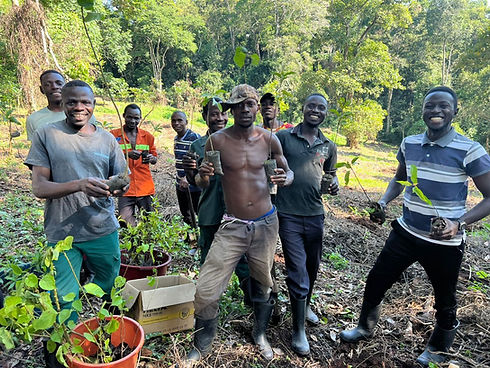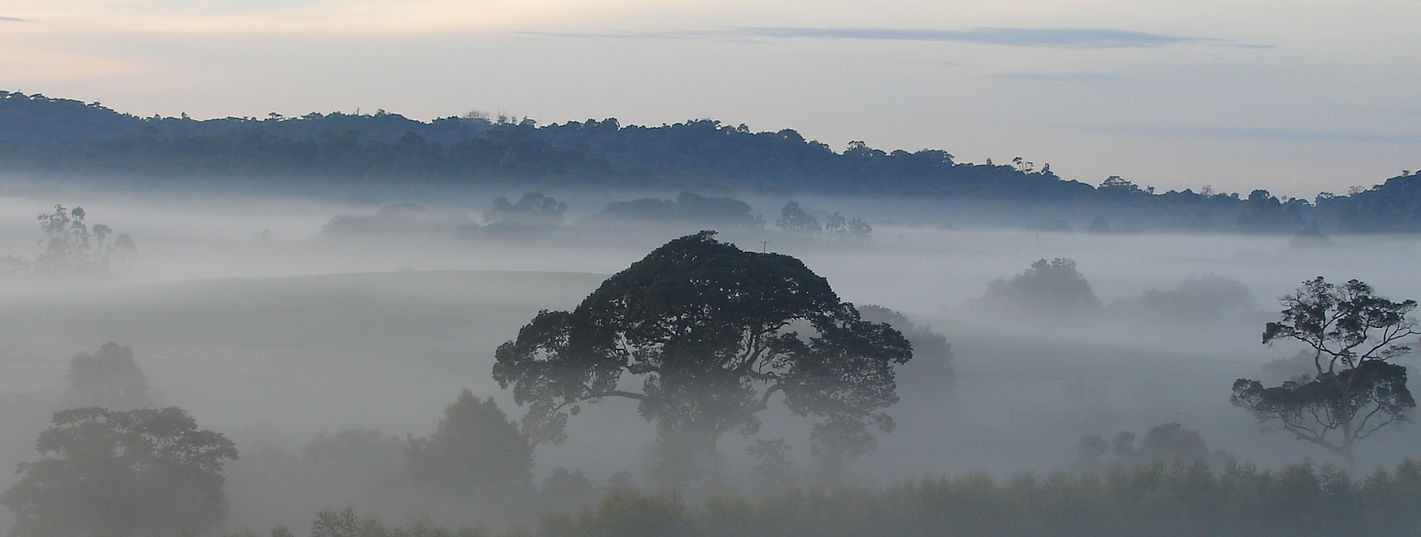Our Focus
While government can call for forests to be restored, local communities rely on forests for fuelwood. In fact, wood supplies 80% of domestic energy needs in Africa. What is needed are win-win situations, where both nature and people benefit. This is our aim for Ugandan National Parks, starting with Kibale.
Before Kibale became a park, over 200 square km of forest were degraded. Restoration is stalled by invasive species that prevent native tree growth. We have partnered with the Uganda Wildlife Authority and the local community to tackle this problem. Community members are employed to remove invasive plants and plant native trees they grow in local nurseries. Natural regeneration complements the tree planting, increasing stem densities and species diversity. The biomass of the invasive species is sold at a low price to the community, freeing the women and children the time-consuming task of finding cooking fuel. Through this we help the forest and its wildlife to recover.


We have a small, dedicated team of professionals that have decades of direct conservation experience in Uganda. While we have contributed to several successful conservation approaches, from chimpanzee ecotourism to the provision of medical care, we are focused on restoring natural habitats and the wildlife they support.
Knowledge
Our project is based on 2 decades of solid scientific data that ensures we know the best methods for success. Over the last 4 years, Patrick Omeja has supervised Emmanuel Opito’s Ph.D. to test our approach. We now know the optimal time to cut of the invasive species, methods to dig up their roots, techniques to grow seedlings, appropriate transplanting and weeding times, the quality of the fuelwood and briquettes, and a community’s assessment considering their needs, ability to buy fuelwood, and perspectives on our efforts.


Team
We have hired and trained a great team to remove the invasive species and plant in native seedlings. Another team has been trained on methods to grow native seedlings and prepare them for transport.
Nurseries
We have cultivated strong relationships with existing community-operated nurseries near Kibale and established our own nursery to be able to increase the diversity of the species we plant. These nurseries are capable of supplying thousands of native seedlings each month.


Sales Points
Working with the Uganda Wildlife Authority, we have established sales points at local shops so that we can deliver inexpensive bundles of fuelwood made from the invasive species to the community adjacent to the park. This poor agricultural community often suffers when animals leave the park and forage on their crops.
Briquettes
In collaboration with New Nature Foundation, we are turning the invasive species into clean burning, high-efficiency briquettes, and providing them to the community. By making briquettes and fuelwood available to the community, we are easing the burden on women and children who often search for hours to find fuel and also decreasing the likelihood that trees will be illegally cut inside the park.

